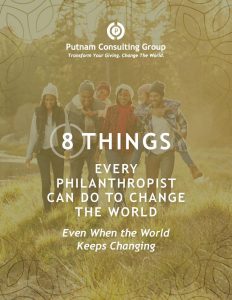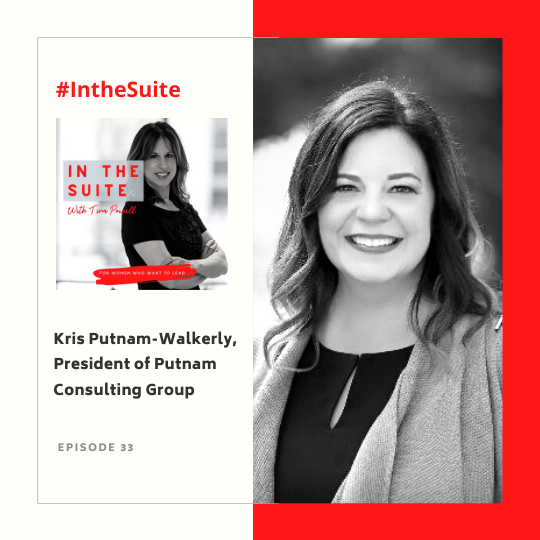How are leading philanthropists becoming the changemakers we need?
Back in April of 2019, a World Economic Forum article started with the sentence, “This is a difficult time for philanthropy.” It went on to detail all the many ways the world’s problems from climate change to shifting demographics required collective action and how philanthropy needed to change to keep up and stay relevant.
Now we’re in a different world. As our civil society safety nets strain under the weight of a struggling economy and the needs of so many; as the pandemic magnifies inequities in health care, education, access to green space, technology, safe work environments, and more; as the cry for equality and justice rings in the street, this call to change has only gotten louder and more urgent.
With more problems comes more potential for philanthropists to make long-overdue changes. In fact, lots of change is already happening. How are leading philanthropists becoming the changemakers we need? Here are six ways:
1. They know why they exist. The Elton John AIDS Foundation believes AIDS can be beaten. It knows its purpose. It asked and answered, “Why do we exist?” As a result of this clarity, the U.S.-and U.K.-based foundation has successfully raised more than $450 million over the past 25 years to challenge discrimination against people with HIV/AIDS, prevent infections, provide treatment and services, and motivate governments to end AIDS around the world. During the pandemic, with this clarity, the foundation created a new COVID-19 Emergency Fund to “protect the people we have always sought to serve,” those people who “become extra vulnerable because of the COVID-19 pandemic.”
If you ask “why?” to understand your purpose and ask “why?” to question assumptions, you’ll transform your giving. You’ll attain clarity, inspire others to join you, and turbocharge your impact velocity.
2. They know when and how to act. For example, if your strategy is to empower ordinary citizens in India to understand the legal system and stand up for their rights, as journalist, philanthropist, and Giving Pledge signatory Rohini Nilekani’s is, you know that developing an online portal that provides reliable information about India’s laws using simple language is an excellent use of funds. Other things a philanthropist could fund, like building schools and increasing access to health care, are not. While important, they don’t help you advance your strategy.
Strategy is framework for making decisions congruent with your goals. In a world where disruption and volatility are the status quo, strategy must be flexible and sentient. Philanthropists should formulate strategy quickly, begin using it immediately for as long as conditions warrant, and then make changes rapidly as conditions change. If this crisis had taught us anything, it’s the futility of spending one year to create a three-year strategic plan.
3. They are agile. We don’t need to look into a crystal ball to respond with agility. But it does help to determine what’s likely to happen and what we can do now to prepare ourselves to act quickly. Agility is proactive—you search for new opportunities and potential threats, so that you can take advantage or navigate around them. Having a year like 2020 makes everyone’s imagination a little sharper about what kind of change is possible in a short amount of time and how to be better prepared.
You don’t need to know specifics of the changes-to-come to build in agility. If you expect the organizations you fund to achieve specific outcomes, ensure that they have adequate resources. If you recognize your grantees must be nimble and adapt to rapidly changing conditions, offer flexible funding and get out of their way.
4. They adapt. Unlike agility, being adaptive is reactive and means you are consistently able to change yourself to accommodate and maximize the benefits of change (whether it’s happening around or within). Examples of this include adapting how you give and how you operate, like adjusting your sick-leave policy in response to the pandemic or relaxing grantmaking rules that are too rigid when everyone is suddenly working from home.
Other ways to be adaptive include looking under your own hood to identify what is not working, and quickly shedding it so that you can double down your resources on what’s most impactful. Also, continuously scan your community to identify emerging trends, and then adapt your grantmaking strategies accordingly.
5. They innovate. As a philanthropist, you want to fund innovative leaders, innovative programs, and innovative ideas. But too often, the onus for innovation falls on other people, especially grantees. And while that’s all well and good, it’s not enough. You can and should regularly generate your own innovative ideas. One of my favorite thinkers on innovation is Alan Weiss, coauthor of The Innovation Formula (with Michael Robert). I appreciate and use Weiss and Robert’s definition of innovation simply as “applied creativity.” To generate a new way of working, you can’t just be creative. You also need to apply that creativity in useful ways.
An example? In California, private philanthropy, regional nonprofits and the state came together to assist immigrants during COVID-19. By combining resources from the $75 million Disaster Relief Fund with the privately funded $5.5 million California Immigrant Resilience Fund, the effort supports families of people who are undocumented. How to get the money to the people? That’s where the regional nonprofits come in who already serve undocumented communities.
6. They learn and improve. Philanthropists (whether a couple, a giving circle, or a corporate giving program) need to intentionally learn from their experience and make course corrections along the way. It’s part and parcel of being agile, adaptive, and innovative. Learning isn’t hard to do, but it must be intentional, documented, discussed within your team, and it must lead to decision making. It can’t merely exist inside your head.
What does this look like in practice? One of my clients asks themselves, “What will make or break this grant?” when deciding whether to recommend a significant grant to their board. They are clear on the risks involved and what needs to happen to make the grant successful. They document the answer in the staff summary of the grant. Six to nine months later, like clockwork, they revisit the grant during program team meetings to assess progress on that risk and identify ways to help ensure success. That is intentional learning.
Even with so many good examples of effective philanthropists, there’s still a lot of room to grow. All kinds of norms and previously drawn lines and boundaries are changing. New alliances and partnerships are forming. Are you in the thick of it, on the fringes or in the nosebleed section?
The sector needs us now, continually changing and becoming the best version of ourselves, working cohesively to create the kind of representative, just, equitable, powerful and resilient civil society possible.
This article was originally written for and published in Forbes.
Could You Benefit From Sentient Strategy?
To navigate and lead during turbulent times, you need a flexible strategy. Your strategy defines what you want to accomplish and how you want to accomplish it. Yet too often, philanthropists lack clarity on both.
Sentient Strategy® is a revolutionary approach to formulate strategy quickly, to be used immediately for as long as conditions warrant, and then to make changes rapidly as conditions change. It builds a simple and flexible strategic approach that creates a road map for change and holds people accountable for rapid implementation.
If this crisis had taught us anything, it’s the futility of spending one year to create a three-year strategic plan. Strategy must be easily adaptable to achieve positive social change in a world where disruption and volatility are the status quo. Now more than ever, philanthropists must be aware of the changing environment in which they operate, and the implications of their actions on others. The Sentient approach helps you do that. You’ll achieve faster results and have a flexible template for adjusting course regularly.
Kris Putnam-Walkerly is one of only a dozen consultants globally who have been certified by Alan Weiss to deliver Sentient Strategy®.
If you need help implementing any of these ideas, let’s talk!
You can email me, call me at +1.800.598.2102, or schedule a call.
Navigate the unknown with confidence!
This free download will help you create a powerful giving plan in radically uncertain times.
So many funders I talk to lately are feeling overwhelmed (and exhausted) because conditions keep changing and it’s hard to plan for an unknown future. But while the future is uncertain, we don’t have to be. You can’t afford to “wait and see.” With these practical how-tos, you can pivot with purpose!










